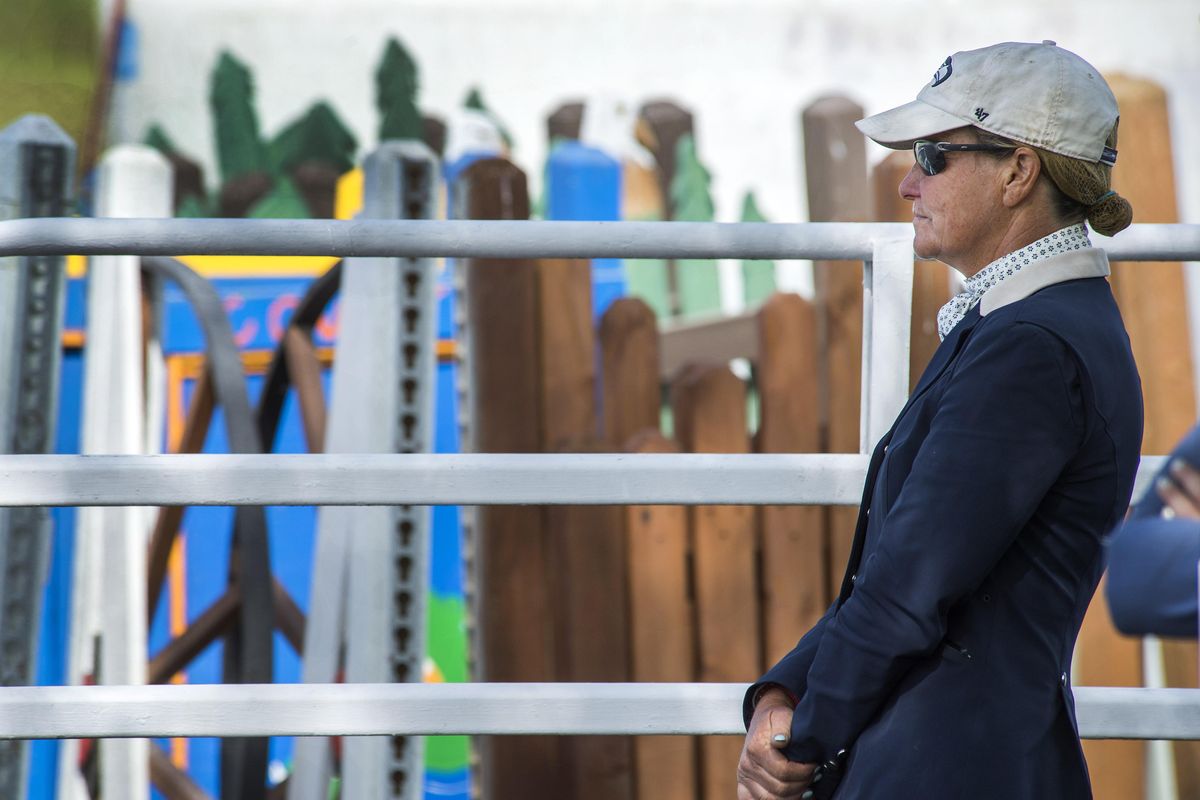‘Eventing’ competition tests persistence of riders, horses

“Eventing” is the Ironman of horseback riding.
For three days in a row, a single horse and rider test their skills against other pairs, first at dressage and then at cross-country jumping, before finally squeezing the last bit of energy out of sore muscles to clear a round of showjumping.
Spokane Sport Horse Farm is hosting its first spring horse trials this weekend. Saturday, more than 240 riders from several states and Canada will face the newly constructed cross-country course on the 150-acre farm between Spokane and Cheney.
Olympian Jil Walton, who competed in Barcelona in 1992, hauled 13 horses to the event from her training facility in Kalispell.
“This is the closest event to us,” Walton said, “outside of Rebecca Farm, which is right where we are.”
How does one travel with 13 horses?
“We take a lot of trailers,” Walton said, laughing. “Some are my clients and their horses, some are my horses. We camp here and hang out together. It’s a great group of people.”
Over the past two years, Sport Horse has constructed a permanent cross-country course with 18 obstacles. One water feature has riders going into the water, jumping a fence and jumping out of the water on the other side.
“It’s pretty spectacular,” said Gail Mackie, show manager.
The new course led to a royal visit at Sport Horse earlier this year, when British Capt. Mark Phillips stopped by to approve the course according to the rules of Federation Equestre Internationale – the international riding association. Phillips is the United States Equestrian Team coach for eventing and the national course adviser.
“We built the course so every fence has three heights – we wanted the lower-level competitors to jump a fence that looks the same as the highest level,” Mackie said while showing off the course Friday morning. Fences in the easiest classes are 18 inches tall compared to 3 feet 9 inches in the most difficult classes.
Eventing originated in the early 1900s as a way to test the skill, bravery and fitness of military horses. Initially, only men in the military were allowed to compete, but now men and women compete in the same classes.
Among the 247 entries in this show, only a handful are men.
“It’s definitely a lot of women who do this,” Mackie said.
In Friday’s dressage test, riders showed their horses’ obedience by riding accurate patterns in walk, trot and canter, guiding the horse to a stop, turning and traveling sideways.
Saturday’s cross-country fences are solid and can be intimidating. Riders gallop their horses at banks and rails, over ditches and into water, trying to finish as close to an optimal time as possible.
“Cross country is my favorite,” said John Camlin, owner and coach at Caber Farm in Onalaska, Washington. Camlin was warming up the horse Armed Services – a 6-year-old thoroughbred. “It does give you a nice adrenaline rush, but I don’t think it’s any more dangerous than any other sport,” he said.
Because the fences can’t be knocked down if the horse hits them, falls can have terrible consequences. Horses wear protective boots on their legs, and riders wear helmets and sometimes other protective gear. Still , rider Philippa Humphreys was killed during a three-day event in New Jersey earlier this month, when her horse hit a fence and she fell off.
Mackie said the safety standards are high – medical staff and ambulances are at the show all weekend – and having the course approved by Phillips means it’s up to par.
“We make things as safe as we can,” Mackie said. “We take that very seriously.”
Riders have to make it through the first two days to be able to compete in show jumping Sunday morning. That’s where they show off their horses’ flexibility and accuracy as they clear a predetermined line of colorful fences inside an arena. Every pole down adds penalty points.
Once the show jumping is over, a total score is calculated and the rider with the fewest penalty points wins.
Walton said this show is perfect for some of her “babies” – young horses with little show experience.
“We brought many new horses and this is just the right environment,” Walton said. “Not too big, not too much – they do a great job here.”